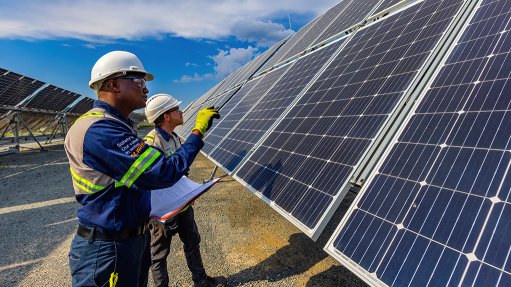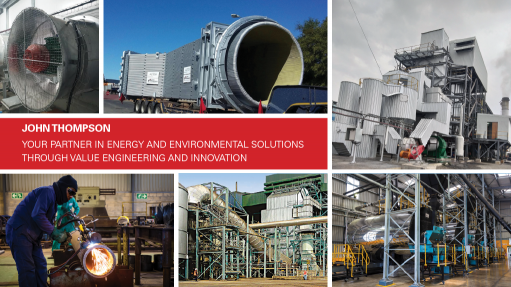Sustainable industry dispels misconceptions
Contrary to the misconceptions about the paper industry being detrimental to the environment, Paper Manufacturers Association of South Africa (Pamsa) executive director Jane Molony posits that the sector is “incredibly sustainable” and shows a circular economy in action.
Whether made from virgin or recovered fibre, Molony maintains paper products offer renewability and sustainability. “In South Africa, we farm trees for their fibre, replanting within the same year of harvesting. At the other end of the value chain, the recovery of recyclable paper diverts raw material from landfill. This makes paper an environmentally competitive substrate.”
Molony explains that the paper industry practices sustainable forestry. Sustainable forestry is in direct contrast to deforestation – deforestation entails the clearing of forests, or intentional destruction or removal of trees and other vegetation for agricultural, commercial, housing, or firewood use without replanting (reforesting). “People are unaware of this, owing to a lack of understanding, which stems from the misconception that trees are simply cut down to make paper products,” she says.
She mentions that 80% of Pamsa members’ plantations are certified by the Forest Stewardship Council to ensure plantations are carefully and responsibly managed. “We do not make paper out of indigenous trees, so we need to plant eucalyptus and pine trees, depending on the required product. The South African forest products sector has helped conserve indigenous forests by providing a managed source of renewable raw materials for wood and paper products that we use or rely on daily.”
There are also more formally protected grasslands under management of the forestry industry than in any other commercial land use sector. Mosaic forestry is employed – only a certain number of hectares are harvested at a time on a rotational basis, as with most crops. Plantations also require an environmental-impact assessment before trees can be planted.
The trees obtain water from the ground and rainfall, negating the need for irrigation. According to statistics from the Department of Water and Sanitation, forestry uses just 3% of available water in the country. This is just 5% of the water used by agriculture (62%). “Backed by thorough research, the trees are engineered and bred to maximise the amount of fibre for every planted hectare, while enhancing the efficiency in terms of water use, for example.”
Power from Paper, for Paper
Molony acclaims the ‘greener’ power of the paper manufacturing process. “During the pulping process, the wood’s cellulose fibre and lignin are chemically separated in a cooking liquor. The fibre is used in the pulp and the liquor is further processed in recovery furnaces to recapture the chemical compounds for reuse.” She expounds that this produces a significant amount of heat which is used to generate steam for the mill processes and cogenerate electricity for internal use and for sale to the grid.
“Some mills have multifuel boilers, where bark and other natural waste products can also be used,” she adds.
Molony points out that this process is carbon neutral, as the energy generated is obtained from biomass.
Beneficiation of By-Products
Molony tells Engineering News that Pamsa has initiated a research programme and has, over the last few years, supported over 40 master’s students and two PhD students, in various fields of pulp and paper related research projects at the precompetitive level.
Backed by a R9-million grant from the Department of Science and Technology, Pamsa is investigating the development of new products and processes through unique and advanced pyrolysis techniques, she adds.
Molony emphasises that the industry aims to use every element of the tree, and to its full potential. For example, leaves and branches, which are already used for steam raising, can be converted through pyrolysis to biocarbon for use as a nutrient-rich supplement when planting new trees. Molony posits that this can be optimised even further – rather than solely burning these resources, there is the potential for high-value chemical products to be extracted, with bio-oils as one by-product for consideration.
The beneficiation of paper sludge – a waste product in the paper manufacturing and recycling process – is a common theme in global research efforts. In line with its mandate of optimising the manufacturing process, Molony indicates that Pamsa is exploring the possibility of producing ethanol from sludge. “There is also the option of drying the sludge and using this and the ash from the power boilers to make bricks. Though there are challenges from an environmental legislation standpoint, government, in consultation with industry, is trying to mitigate this by considering excluding ash reuse from requiring a special licence.”
In response to the paper-manufacturing process being water-intense, Molony argues that, despite the large amounts of water used, the bulk of it is recycled and grey water is reused wherever possible in the mills. She supposes that the water the mills return to rivers after use might sometimes be even cleaner than the water they extracted, as it is treated to high standards. Further, the use of water is strictly regulated through water licences.
The pulp and paper industry, from the management of vast tracts of forests to the production and use of renewable energy, from paper recycling to the beneficiation of its by-products, contributes significantly to the global carbon balance. “Businesses and consumers, who use paper products every day – beyond the common copier page – can rest assured that paper products can actually reduce your carbon footprint.”
This is encapsulated perfectly in the fact that, were it not for the forestry and pulp and paper industry operating globally for the past 150 years, in full, carbon dioxide levels in the atmosphere would be 5% higher, resulting in an about 0.5 °C temperature increase than currently, concludes Molony.
Article Enquiry
Email Article
Save Article
Feedback
To advertise email advertising@creamermedia.co.za or click here
Comments
Announcements
What's On
Subscribe to improve your user experience...
Option 1 (equivalent of R125 a month):
Receive a weekly copy of Creamer Media's Engineering News & Mining Weekly magazine
(print copy for those in South Africa and e-magazine for those outside of South Africa)
Receive daily email newsletters
Access to full search results
Access archive of magazine back copies
Access to Projects in Progress
Access to ONE Research Report of your choice in PDF format
Option 2 (equivalent of R375 a month):
All benefits from Option 1
PLUS
Access to Creamer Media's Research Channel Africa for ALL Research Reports, in PDF format, on various industrial and mining sectors
including Electricity; Water; Energy Transition; Hydrogen; Roads, Rail and Ports; Coal; Gold; Platinum; Battery Metals; etc.
Already a subscriber?
Forgotten your password?
Receive weekly copy of Creamer Media's Engineering News & Mining Weekly magazine (print copy for those in South Africa and e-magazine for those outside of South Africa)
➕
Recieve daily email newsletters
➕
Access to full search results
➕
Access archive of magazine back copies
➕
Access to Projects in Progress
➕
Access to ONE Research Report of your choice in PDF format
RESEARCH CHANNEL AFRICA
R4500 (equivalent of R375 a month)
SUBSCRIBEAll benefits from Option 1
➕
Access to Creamer Media's Research Channel Africa for ALL Research Reports on various industrial and mining sectors, in PDF format, including on:
Electricity
➕
Water
➕
Energy Transition
➕
Hydrogen
➕
Roads, Rail and Ports
➕
Coal
➕
Gold
➕
Platinum
➕
Battery Metals
➕
etc.
Receive all benefits from Option 1 or Option 2 delivered to numerous people at your company
➕
Multiple User names and Passwords for simultaneous log-ins
➕
Intranet integration access to all in your organisation


















